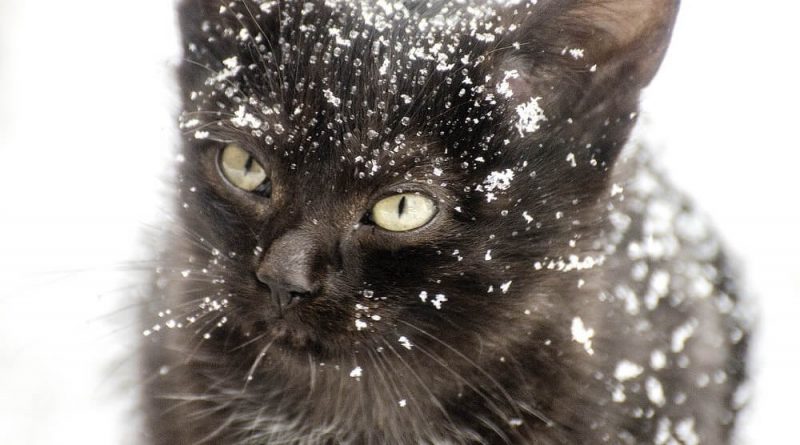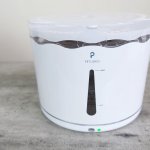How to Keep Cats Warm Outside: 4 Steps to Keep Outdoor Cats Warm This Winter
Last Updated on
Maybe you’ve seen pictures on Facebook of sad cats and dogs outside in the snow— “just let me in, I get cold, too” read the captions. The comments below rail on about and bash the evil people who don’t let their animals inside in the winter.
Maybe you cringe because you’ve been taking care of a feral cat who you know would never accept the indoor lifestyle. Perhaps you have a barn cat that just isn’t happy when she’s inside. You don’t want to be one of those “evil people” but what can you do?
Don’t worry about those judgmental Facebook-preachers. You can keep cats warm through the winter—even if they never come inside the house. Let’s dive into the four steps you can take to keep outdoor cats warm through the winter.
1. Provide your outdoor cat a well-insulated shelter where she can get out of the weather.
While a cat’s fur coat will keep her warm and comfortable in most weather, it’s not enough to protect her during the worst of winter unless she has appropriate shelter. Once the temperatures drop below freezing (32° F) cats are in danger of frostbite or hypothermia. If you don’t live in sunny San Diego where temperatures are comfortable year-round, your cat needs shelter when winter comes.
A good cat shelter keeps out any snow and rain and is well-insulated.
You can either build a shelter out of household items that you might have around or purchase a shelter designed for pets.
If you like DIY projects, you’re in for a good time—there are a lot of great ideas out there for homemade cat shelters. Winter cat shelters can be built out of wood or made from plastic Rubbermaid-style lined with styrofoam insulation. This guide from Neighborhood Cats is filled with great ideas and instructions to help you make your own outdoor cat shelter.
Keep these tips in mind if you choose to make your own winter cat shelter:
- The shelter shouldn’t be much bigger than your cat—keep it small so that your cat’s body heat fills the space quickly and there isn’t much room for it to escape.
- Raise the shelter off of the ground with a pallet or concrete blocks so that the frozen ground doesn’t suck away heat.
- Think about protecting the entrance of the cat shelter with a flap. This will keep the cold and wind from getting inside.
- Line the interior of the shelter with reflective Mylar emergency blankets. This, along with good insulation, can make your cat shelter a warm and cozy place to hang out. The reflective blankets will bounce your cat’s body heat right back at her.
If you don’t have the time or inclination to build your own cat shelter, there are premade shelters available. With the right bedding, a small dog igloo can make a decent winter shelter. Another option is something like this heated cat shelter from K&H Pet Products. It features a heated mat if you have access to electricity and is wide enough to hold a couple of cats. The shelter receives good ratings on Chewy.com.
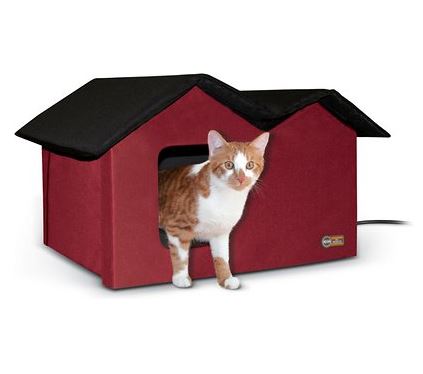
2. Choose a location for your cat shelter—make sure it’s protected from the brunt of bad weather.
Place the shelter next to a building or bush so that it’s protected from bad weather. A protected corner of the porch can work well for an outdoor cat used to people but might be a too noisy and well-trafficked location for feral cats.
Set up the cat shelter away from any areas that get a lot of wind gusts. The entrance should preferably face the house or some structure so that the entrance is sheltered. You don’t want any snow coming through and making it impossible for your cats to enter or exit their shelter.
If possible, choose a location that receives a good deal of sunlight during the day. The heat from the sun will help warm it up.
3. Choose the right bedding to provide your cat with a warm place to snuggle up.
Your first instinct might be to put down a fuzzy blanket in the cat shelter—but think again! Towels or blankets can actually absorb your cat’s body heat and make her colder. Any snow that your cat tracks into the shelter can also melt on a blanket, leaving kitty with an icy mess once the water refreezes.
Dry straw or shredded newspaper makes a good base for your cat’s shelter and will maintain heat better than blankets.
Straw is a great bedding choice for your winter cat shelter. It repels water and makes a comfortable cushion for cats. It’s important that you choose straw, not hay. For more information on the difference between straw and hay, take a look at this post from Alley Cat Allies.
Another way to keep your cat warm in her shelter is by providing self-warming cushions.
If you like crafting and are handy with a sewing machine, you can make these at home.
You can sew up self-warming cushions at home by sewing a Mylar emergency blanket inside of a couple of pieces of fabric. Wool can work well for this purpose as it repels water and won’t absorb your cat’s body heat. The reflective properties of the Mylar blanket will send your cat’s body heat back towards her when she lays on it.
If you don’t know how or don’t like sewing, there are a lot of self-warming blankets available for purchase. Here’s a set of two (large and small) self-warming mats from Chewy.com.
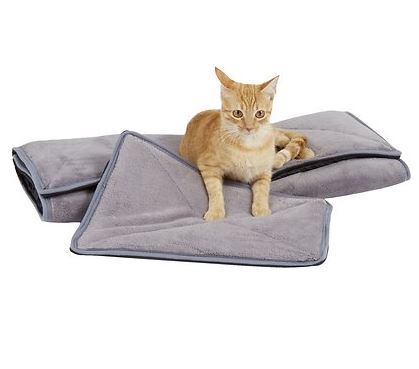
4. Offer slightly warmed meals to help outdoor cats warm up inside.
Don’t you feel better after sipping up some warm soup or coffee after a long day playing outside in the winter? Cats also appreciate a warm meal when it’s cold outside.
Add a little warm water to your cat’s canned food before serving it. This extra water doesn’t hurt—winter weather can also dehydrate cats.
While we almost never recommend feeding dry food (find out the top 5 lies about dry cat food here), it’s a good idea to set out some dry food for outdoor cats in the winter. Cats need more calories to stay warm in cold weather—so put out that extra fuel for the cats to eat when they need it. It’s also possible for wet food to freeze before your cat is done eating it, so dry food on the side won’t hurt!
Make sure your cat’s water doesn’t freeze over with a heated bowl.
Cats should always have a source of fresh drinking water available—and a large hockey-puck-shaped ice cube doesn’t count. It’s a good idea to invest in a heated water bowl to make sure your cat has liquid, not ice to drink.
This heated cat bowl set features two bowls so that neither your cat’s water nor her food will freeze over. It has received high ratings and should keep your cat’s water free from ice even on the coldest days.
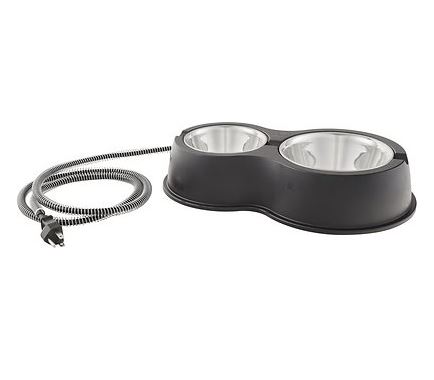
With a little effort, you can help to keep your outdoor cats safe and warm throughout the winter.
When the temperature dips below freezing, all cats need shelter to stay safe.
Creating a winterized cat shelter is a simple and effective option to help keep outdoor cats safe and warm in most winter conditions. Let us know if you found this article helpful, and please contact us if you have any questions!
Did you find this post useful? Pin it for later!
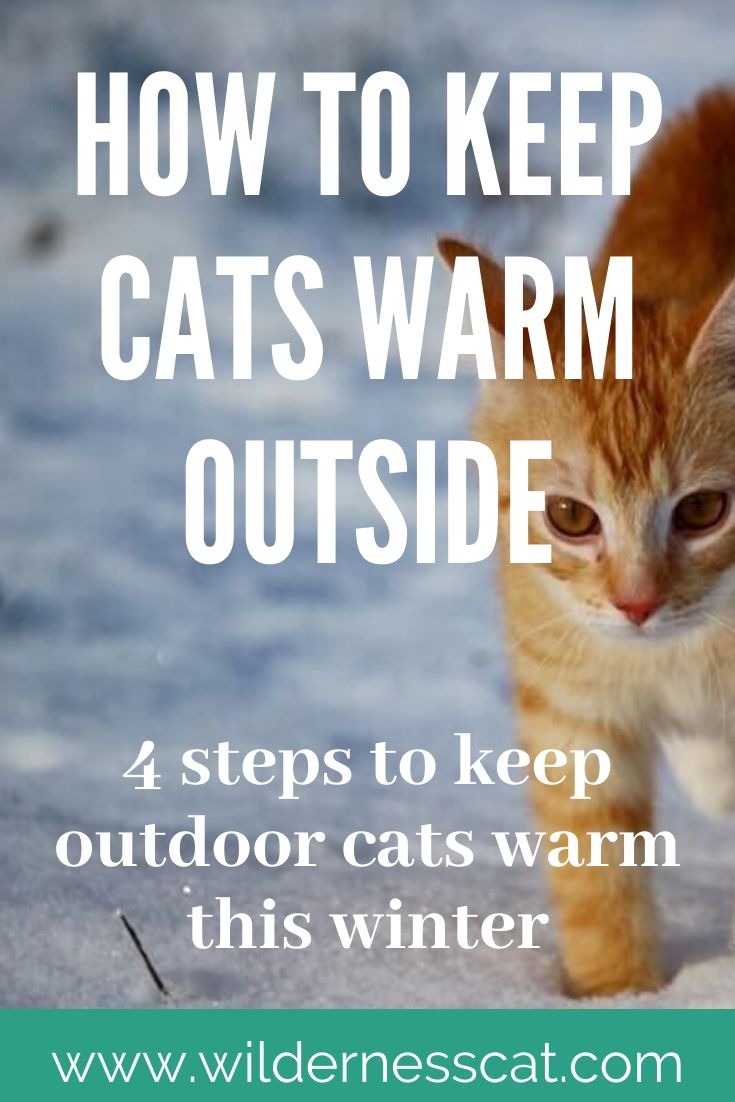
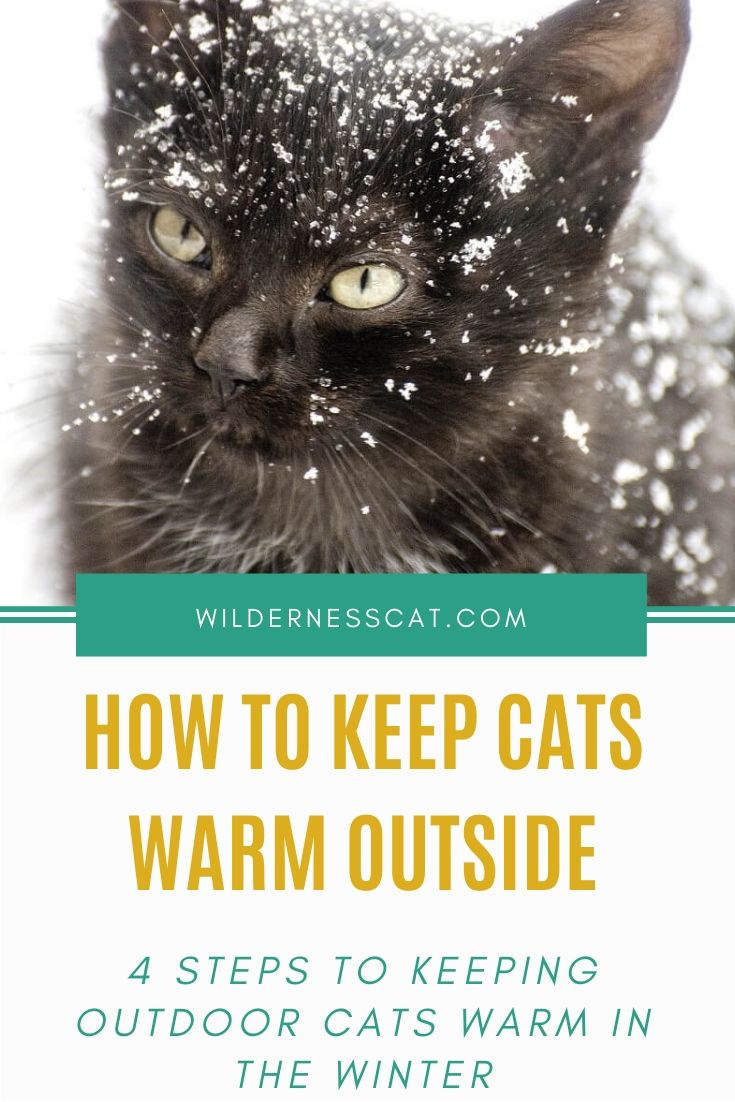
Additional resources:
https://www.neighborhoodcats.org/how-to-tnr/colony-care/feral-cat-winter-shelter
https://www.petmd.com/cat/conditions/cardiovascular/c_ct_hypothermia
https://www.alleycat.org/resources/feral-cat-shelter-options-gallery/

